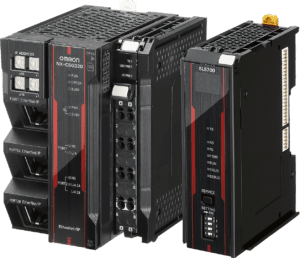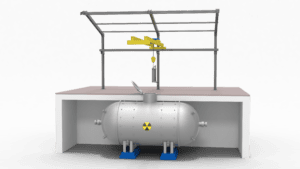Eight finalists were announced on Friday November 2nd for the inaugural LEAP Awards’ Industrial Automation Category. The competition was scored by a panel of independent technical/engineering-oriented judges. The four judges below were responsible for the Industrial Automation category:
Bonnie Baker
Consultant
ATW, LLC

Bonnie Baker is the author of six books, including A Baker’s Dozen: Real Analog Solutions for Digital Designers. Baker holds a Master’s of Science in Electrical Engineering from the University of Arizona and has authored more than 500 technical publications including magazine articles, app notes, seminar sessions, data sheets, and a few patents. She is also a frequent presenter at technical conferences and shows.
She has been involved with analog and digital systems for more than 30 years. Baker started as a manufacturing product engineer, supporting analog products at Burr-Brown. From there, she moved up to IC design, analog division strategic marketer, and then corporate applications engineering manager. In 1998, she joined Microchip Technology. This expanded her background to not only include analog applications, but microcontroller solutions as well.
Bradford L. Goldense
President
Goldense Group Inc.

Bradford L. Goldense is a subject matter expert in the management and processes of product development, innovation and performance measurement. He has authored or been cited in more than 300 articles and books and holds nearly 150 registered copyrights.
Brad was a faculty member of the Graduate Engineering School Executive Program at The Gordon Institute of Tufts University for 19 years. He is internationally recognized and has consulted with more than 200 of the Fortune 1000 in 500 manufacturing locations around the world. GGI has helped many companies to increase their stock price by improving R&D innovation and execution, and by improving communications of prowess to the marketplace and investor community.
He previously held positions at Texas Instruments, Price Waterhouse, Knight & Associates, Index Group, and a family engineering business before founding GGI. Brad has a BSCE from Brown University and an MBA from Cornell’s Johnson School. He holds four professional certifications: New Product Development Professional by the Product Development and Management Association, Certified Manufacturing Engineer by the Society of Manufacturing Engineers, Certified Computer Professional by the Institute for Certification of Computer Professionals and Certified in Production and Inventory Management by the American Production and Inventory Control Society.
Brad was a founding member of the Society of Concurrent Engineering and founder of the Society of Concurrent Product Development which he ran until 2006. He retired from the board in 2012. His non-profit corporation lives on, with appreciated support and funding from 3M.
Thomas E. Manley
Engineering Manager
Feedall Automation

Thomas Manley is Manager of Engineering at Feedall Automation, where he directs and designs the machine orders that come through the engineering department. He is also a part-time engineering instructor at Lakeland Community College and is the designer of 14 U.S. Patents for various companies that he has worked for.
Manley has worked with high-profile companies such as Harley-Davidson, American Axle, Meritor, Caterpillar, and Ford Motor Company, among others. He helps companies and engineers implement automation systems into their plant, while adhering to their desired budget and goals.
Karl H. Schultz
President
Schultz Associates

Karl Schultz is the President of Schultz Associates, specializing in manufacturing and technical management consulting in the electric motor industry. He is also considered an expert in implementing lean/world class business processes.
Schultz is an experienced hands-on manufacturing management consultant who has had both line and staff positions in the electric motor industry. He was the division Director of Manufacturing Engineering for Emerson Electric for 10 years, supporting four plants in the U.S. and Mexico. He was then the Business Director of Manufacturing Engineering at GE Motors for three years. Consulting has taken him worldwide in many various successful projects. He has more than 25 years in the electric motor industry.
Schultz holds a BSME in Machine Design from Western Michigan University. He was a member of the Electrical Manufacturing and Coil Winding Association, serving as the VP and a Board member. He is a senior member of the Society of Manufacturing Engineers and a past member of the Society of Automotive Engineers. He has received numerous awards such as Best Industry award (General Signal), Most Valuable Player award (BMI), performance awards (GE Corporate & Motors), and others. He is an adjunct instructor at the Oregon Institute of Technology – Wilsonville, teaching junior and senior level management courses such as Lean/6 Sigma and Organizational Behavior.
Below are descriptions of the eight finalists. The overall winner of the Industrial Automation category will be announced at an awards dinner on December 11th in Costa Mesa, Calif.
DataMan 470 series fixed-mount barcode readers solve complex, high-throughput manufacturing and logistics applications with ease. DataMan 470’s multi-core processing power, imaging technology, high-resolution sensor, advanced decoding algorithms, and simple setup delivers maximum coverage, speed, and ease-of-use.
Littelfuse
MP8000 Bluetooth Enabled Motor Protection Relay 
The MP8000 Bluetooth Enabled Motor Protection Relay is a new category of product designed to enhance worker safety while allowing for faster, easier control and troubleshooting of machines. The first fully-programmable motor overload relay to offer integrated Bluetooth capabilities, the MP8000 relay enables maintenance personnel to communicate with the relay from up to 30 feet away using an app on an iPhone® or Android™ smartphone or tablet computer. A worker can set up the relay, view real-time data and troubleshoot fault codes while the panel door remains closed to prevent potential electrical shock and arc-flash hazards.
Bluetooth® communication provides several conveniences that improve productivity. Workers save time by leaving their PPE (personal protective equipment) in their locker. Motors are easier to troubleshoot when workers can stand nearby the motor, instead of next to the relay located at a distance up to 30 feet away. If the relay is located in an outdoor cabinet, workers can interact with it while remaining warm and dry in their vehicles during inclement weather.
Once a smartphone is securely paired with the relay, a worker can easily monitor system status in real time, set up the relay, adjust its settings, and review its fault history. Instead of turning knobs and scrolling through menus on a small display, workers can use a smartphone interface to interact with the relay. The app is intuitive and requires no training to use.
Omnify Software
Omnify Empower / 6 River’s Robot Chuck 
Chuck is a warehouse robot built from the same technology and sensors as autonomous vehicles. Omnify Empower, a Product Lifecycle Management (PLM) Software, was instrumental in developing 6 River’s Robot Chuck. The Chuck Robot, using machine learning and artificial intelligence, leads associates through their work zones to help them minimize walking, stay on task and work more efficiently.
Chuck integrates with Warehouse Management Systems so it can be used in all put-away, picking, counting, replenishment and sorting tasks. Chuck keeps warehouse employees on task by guiding them through the facility through each step of the packaging process. It can glide around the room and also has a touchscreen to help workers locate items. Chuck uses sensors to help detect worker productivity. It’s also been designed to help with employee training.
6 River isn’t worried about eliminating humans and instead believes there is an opportunity to help industries that have a “massive labor shortage” for warehouse suppliers. There aren’t enough people to fill the jobs.
The 6 River System robots offer an intuitive design and guide workers to the correct locations and step them through the picking process at a granular level. The robots can clearly increase worker productivity and picking accuracy. 6 River Systems offering can increase units per hour per employee by 200 to 300 percent. Pricing runs at about $250,000 for 8 robots in the first year and maintenance costs of about $50,000 a year thereafter. 6 River Systems currently has 20 customer sites with a total of more than 200 robots in use. It is the company’s end of year goal to have 600 Chuck robots in use across 40 sites.
Omron Automation Americas 
CIP Safety Controller
Omron’s new CIP Safety Controller (part of the NX controller series) is the world’s first to supply two popular safety networking protocols: CIP Safety, which is widely used among industrial robot manufacturers, and Safety over EtherCAT, a protocol that ensures a high-speed response.
CIP Safety is one of the most widely used safety networking protocols because it enables various nodes in the system – such as PLCs, I/O blocks, light curtains and interlock switches – to communicate with one another. Since it’s both network- and media-independent, it allows safety and standard control devices to reside on a single network. This eliminates the need for a purpose-built safety network and enables the sort of flexibility that manufacturers strive for in the face of more globalized, high-mix production needs.
The new controller will be a welcome solution for any manufacturers seeking to implement the CIP Safety protocol in order to have an alternative to the traditional purpose-built safety network. It is also designed to assist manufacturers in need of a thoroughly scalable safety system that provides direct node-to-node communication and those who are looking for a way to simplify their safety program design.
Parker Hannifin
Universal Pneumatic Valve Manifold 
An industry leading product offering wide flow ranges and design versatility, the H Series ISO pneumatic valve family is intended to make the machine designer’s job easier.
An improved modular manifold provides the opportunity to mix ISO 5599 / 15407 02, 01, 1 and 2 valve sizes on one common manifold without expensive and bulky transition blocks. The ability to mix sizes allows for right sizing each valve to its specific flow and pressure requirement instead of sizing all valves to the largest requirement, thus reducing cost and space on the machine.
Designers may easily zone supply or pilot pressures, allowing for a mix of different pressures/vacuums on one valve manifold instead of requiring separate manifolds, reducing machine footprints.
Main and pilot supply/exhaust may be added anywhere in the valve manifold creating zone and pressure isolation for quick exhaust of a “safety zone”.
The subsequent cost savings are considerable: right-sizing a manifold with 10 valves can yield a 28% savings ($2,361 down to $1,704) or more depending on specific application.
The new H-Series valve family incorporates a P2H (Parker-to-H-Series) IO-Link network node allowing for an easy means of connecting the H-Series valve to a low-cost IO-Link network. The P2H IO-Link Node also features a convenient 7/8 power in and out connection for auxiliary power—a first for an IO-Link enabled valve device. Thanks to the P2H network node, machine builders can save up to 40% on total system and installation cost versus Ethernet wiring.
Protolabs
Farmbot – humanity’s first open-source CNC farming machine 
FarmBot is humanity’s first open-source CNC farming machine. Using open-source technology, home gardeners can assemble the software and hardware to oversee and customize their own garden. FarmBot hardware employs linear guides in the X, Y, and Z direction to allow for tooling such as seed injector, watering nozzles, sensors, and weed removal tools to move with precision. Through the use of a phone or laptop application, it can accurately plant a variety of crops all in the same area at the same time. The game-like interface allows the grower to customize and build an entire growing season – with built-in regimens for taking care of each plant throughout its entire life by scheduling sequences to run when the plant reaches certain maturity.
At the core of the system is a single board computer, a programmable microcontroller, various motors, and rotary encoders. The aluminum frame combined with the electronics enables FarmBot to automate everything from planting seeds to watering plants on an individual basis.
Schneider Electric
EcoStruxure Augmented Operator Advisor 
EcoStruxure Augmented Operator Advisor, an innovative augmented reality software that superimposes real-time data and virtual objects onto cabinets or machines, giving operators and technicians immediate access to relevant information.
The benefits of leveraging this state-of-the-art AR technology in the field or the plant include, but are not limited to:
- Reduced downtime. Operators can open the electrical cabinet doors virtually with no need to shut down operations.
- Speeding up operation and maintenance. Technicians can find information faster, with immediate access in the field to real-time data, user manuals, instructions, diagrams, etc.
- Reduced human errors. Locates the right equipment and guides operators step-by-step to complete maintenance procedures.
EcoStruxure Augmented Operator Advisor’s interface gives direct access to information like labels, process variables, SQL database, machine documentation, electrical diagrams, web pages, instructions, notes, and instructional videos.
The plug-and-play architecture works on tablets (currently iOS®, and Android™ with Windows® versions in the works), and uses a Windows-based PC as the server platform. The server receives the data to share with the tablet from multiple sources, such as PLCs, SQL databases, and OPC UA servers for example. To ensure flexible integration into any user’s existing system, the software is compatible with servers and components from any vendor.
Serapid
Telescopic Jib
Telescopic jibs for intervention in confined environments are a powerful and economical solution for demanding jobs. SERAPID has recently designed a new telescopic jib for the nuclear market. It’s an actuator consisting of a specific rigid chain, which can be deployed over several meters without being supported, and thus ensure control operations or small mechanical work in confined environments such as tanks, containers or cells.
This new product is very compact, can be easily introduced by reduced access (manhole, coring, hatch, etc.) and is especially useful for dismantling work. With a simple and robust design, this telescopic arm will be a powerful and economical tool for everyday use.
It’s composed of stainless steel, titanium and plastic. Features include a maximum payload of 45 kg, a maximum extended length of 5 m, and speed of 30 mm/sec. The pitch of the chain is 60 mm and the deflexion at the end of the chain is 70 mm for 10 kg at 2 m or 500 mm for 10 kg at 5 m.








Leave a Reply
You must be logged in to post a comment.